E-Z Rider?
It’s the first proper electric bike from a mainstream Japanese bike firm – and we’ve ridden it. The new Kawasaki Z e-1, tested in Paris.
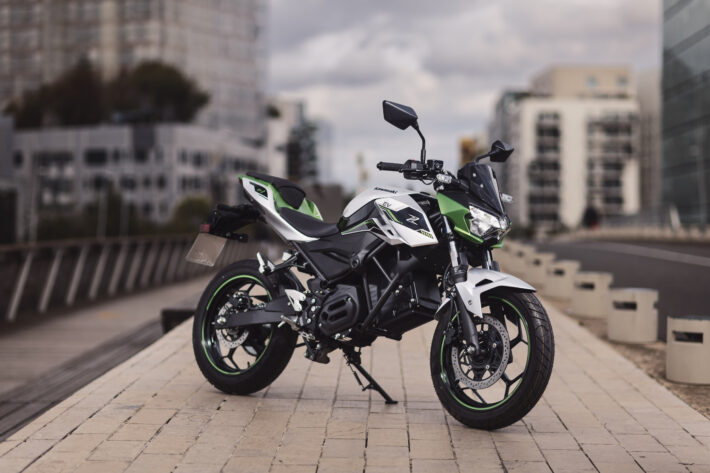
It’s not often that you gaze longingly at a Honda Forza 125 scooter at the traffic lights, dreaming of its massive power output, huge torque and enormous tank range. But that’s where I am today, sat at a set of traffic lights next to the Eiffel Tower, in a massive traffic jam.
I’m in the city of love, not for a romantic break with the missus, but to get to know the new Kawasaki Z e-1 battery-powered bike. And while it’s got a decent set of specs for an electric machine, it’s still some way off the likes of the scruffy Honda maxi-scooter rumbling away next to me…
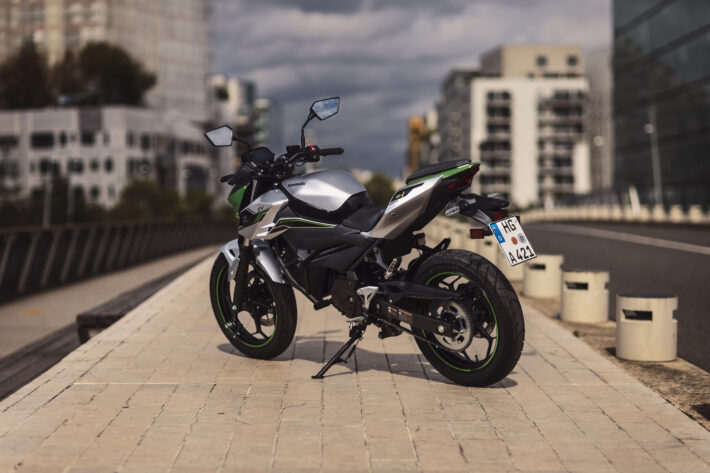
That’s not the point of the Z e-1 of course. It’s a first from a ‘proper’ big bike firm: a genuine motorbike, with a conventional chassis, decent running gear, and almost-normal styling – but no petrol tank or internal combustion engine.
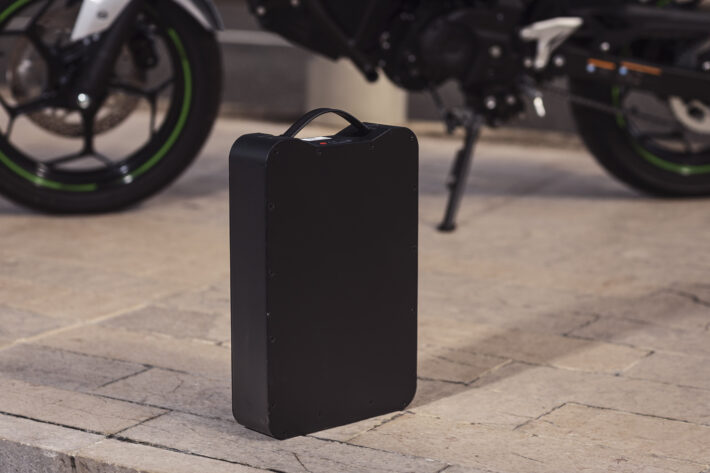
Rather, you have a pair of removable lithium-ion battery packs, and a small air-cooled electric motor, with a little reduction transfer box linked to a chain and sprocket final drive. It’s a toe in the water for Kawasaki, in an attempt to work out what’s going to come next when (or if) petrol is phased out.
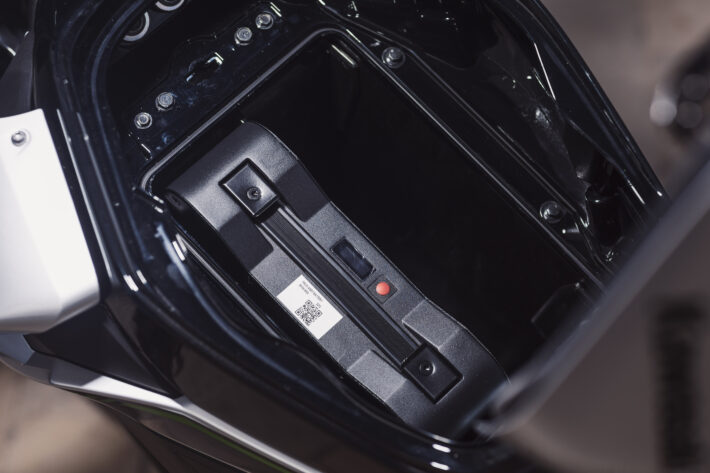
The firm has stated it will produce battery-powered urban commuting tools like the Z e-1 and Ninja e-1, with a hybrid powertrain coming next, and then the possibility of bikes powered by internal combustion engines with use carbon-emissions-free fuels: hydrogen, biofuels, or something else.
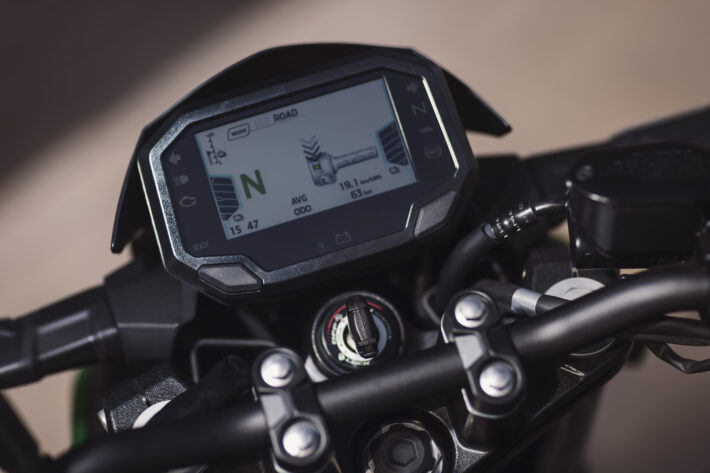
We’re here in Paris to take a first step then, and sample what a big bike firm can do within the constraints of current electric technology. Walking around the Z e-1, parked outside the cool music venue by the River Seine where the event is based, you can clearly see its roots in the firm’s Z125 learner bike.
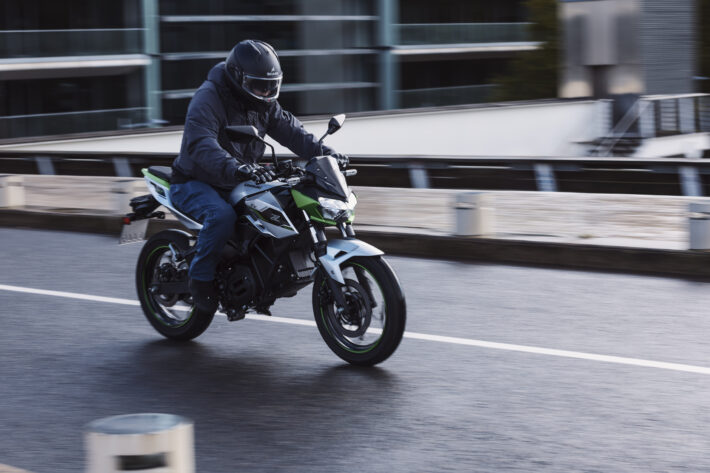
The frame, swingarm, wheels, tyres, bodywork – they all have the same look as the Thailand-built 125. As it turns out, almost all of the chassis is bespoke, and made to suit the new powertrain, but it’s based on the same tech and design cues, with similar geometry.
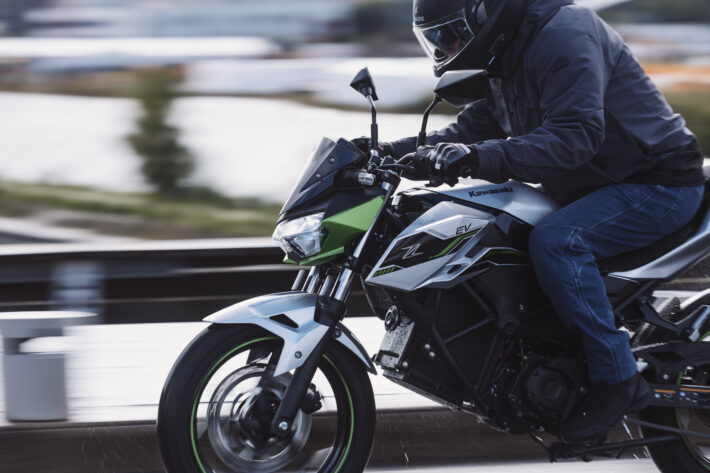
The ‘engine’ is the small round black unit at the very bottom, with the large black cuboid above it housing the battery packs, and the ‘fuel tank’ is a cover, under which live the removable batteries, plus a storage space, which is just big enough to carry the separate battery charging unit.
A neat 4.3” TFT colour LCD dash has a unique display – with two ‘fuel’ gauges, one for each battery, and the switchgear is conventional, but again with unique features. The final weirdness is no clutch lever or gear lever – it’s a twist and go affair – and the throttle turns both ways, allowing a slow-speed reversing mode. Wild.
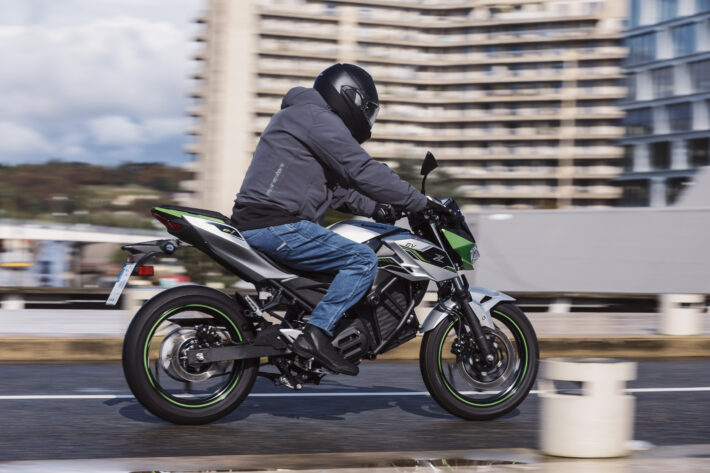
The nice engineers from Kawasaki take us through the basics – there’s not too much to explain other than that reverse function – which only works in a special ‘walking’ mode that limits forward and back speed to about 3mph.
The main drive has two modes – Eco and Road, with Eco limiting speed to just 35mph – and there’s an ‘e-Boost’ button, which temporarily increases the output to the full 12bhp, but only for 15 seconds. This sounds like fun, but is a bit flawed, as we’d find out shortly.
Alpinestars airbag and jacket on – we might be going slowly but Paris is a dangerous town when it comes to traffic – lid donned, and we’re away, following a lead rider on a tour of central Paris.
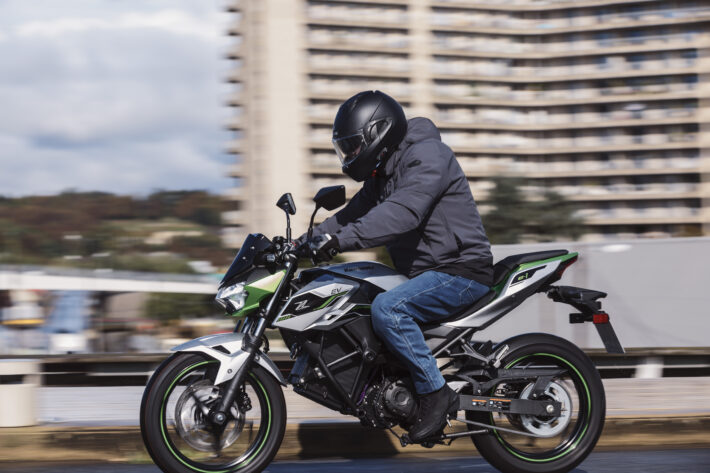
The first impression when you sit on the bike is much like any other premium mainstream 125cc bike. The suspension is soft but not squidgy, the riding position comfy with a low seat height, and the seat/tank/bars are all fairly narrow, though it has that elusive ‘big bike feel’ that learner bike designers all strive for.
‘Ignition’ on, and a big green ‘N’ appears on screen: you then have to push and hold what would be a kill switch on a petrol bike, and the e-1 goes into drive mode. Twist the throttle and you’re off, pulling away on a silent whirr of torque.
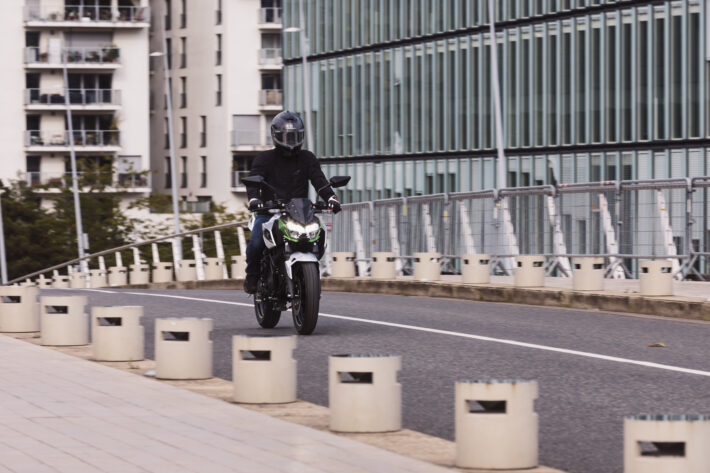
The next ten minutes is a very steep learning curve on what the little electric Kawasaki can do. In standard ‘Road’ mode, it’s pretty slow, and just about keeps ahead of traffic in town. Engage the e-Boost button, and things are much better – but it has two big flaws.
Firstly, is the time limit, to just 15 seconds, after which the computer turns it off for about a minute or so. That’s because it draws so much extra power that the batteries and motor need to cool down after using it. The second flaw is much more annoying though: as soon as you close the throttle, the e-Boost disengages, and you have to pump the button again to bring it back.
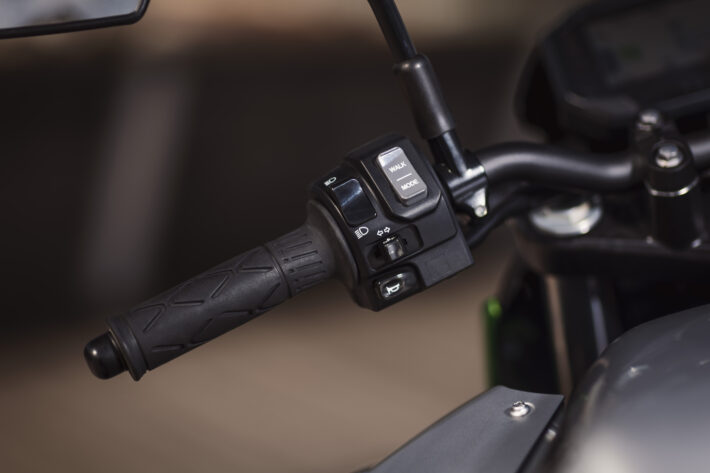
That means if you accelerate for a gap in traffic, and it closes briefly, you’re left hanging as you close the throttle, then when the gap returns, you don’t have the grunt to make it. In the end, I resorted to holding the throttle open and using the rear brake to slow things down a bit, just to keep the e-Boost engaged.
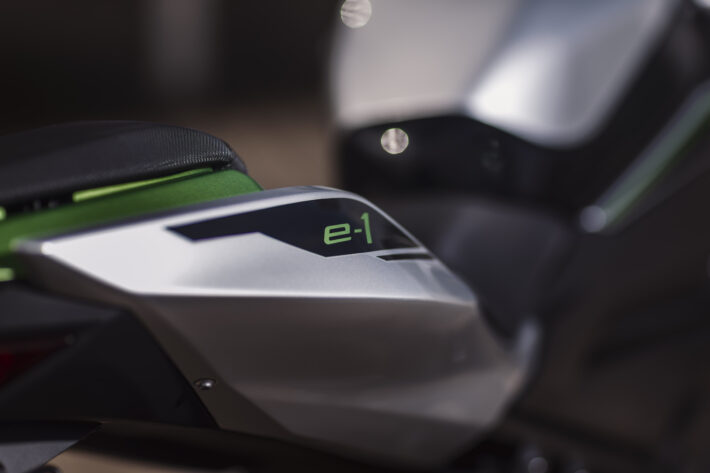
When the road opens out a bit, and you can go a bit quicker, the Z e-1 does okay, until the Boost runs out. I saw about 95kph (60mph) on the clocks down one stretch of Peripherique on Boost, but after it ran out, things gradually slowed down again (Kawasaki says top speed sans boost is about 85kph (53mph)). And, when the batteries get onto reserve power, a little orange ‘Tortoise’ lights up on the dash, and you’re in a super-steady get-you-home mode, with moped-type performance.
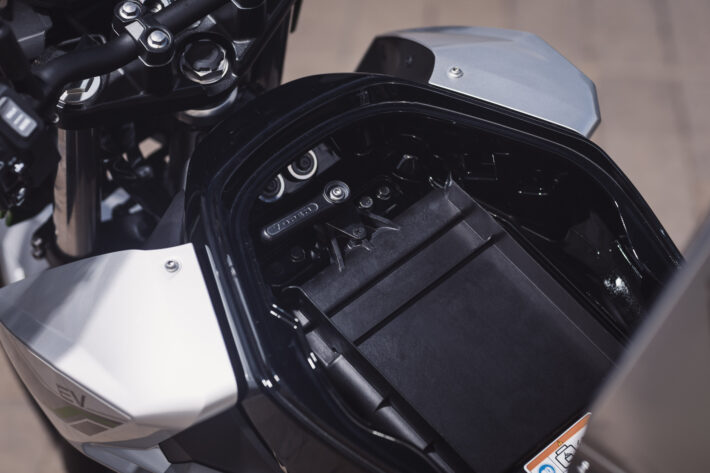
A limited experience then on the powertrain front. Which is a shame, because the rest of the bike works well. The chassis is nimble, with great balance, and you can sit at a red light for ages with your feet up.
It’s brilliant at slow speeds, and super-narrow, so you can get through any traffic jam. The brakes are good, with lots of power and a solid ABS setup, while the suspension is a cut above the basic kit seen on many smaller firms’ products, with a comfy ride and good wheel control. Even the IRC tyres were decent on the damp Parisian cobbled streets.
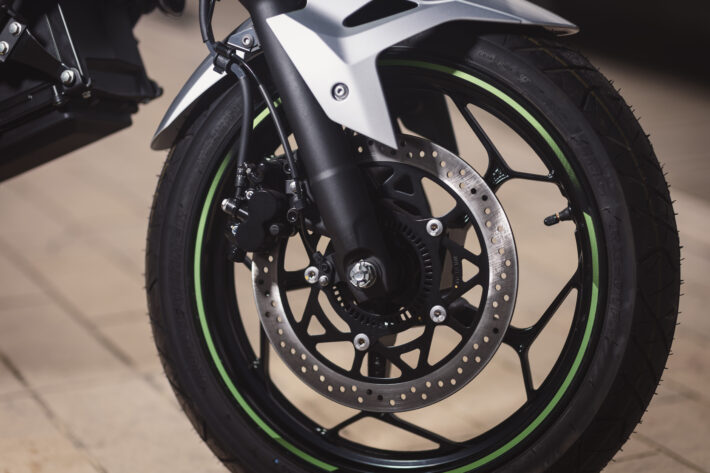
So – should you buy a Z e-1? The answer for many folk will be ‘no’. It’s expensive – around £7,700 for the Z and a few hundred quid more for the faired Ninja version. The range is limited, meaning it’s restricted to medium commutes at most, and the performance is somewhere around a 100cc bike in reality, once the e-Boost runs out.
For most people, a modern petrol-powered bike – like Kawasaki’s own £4,299 Z125 – will be a cheaper, faster, more flexible choice; and with over 100mpg possible, probably just as ‘green’.
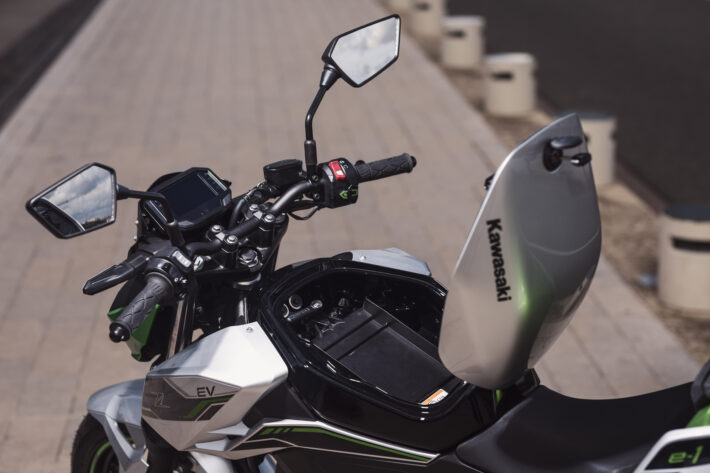
But, if you have a solid hankering for electric power, have a short-ish commute of around 10 miles, and you want something more than a pedal-assisted e-bicycle, then the Z e-1 is well worth a look. Running and servicing costs are miniscule, plus there’s a five-year warranty on the batteries.
The handling and equipment levels are more than decent, and there’s no doubt it looks good, in the unique ‘Clean Green’ paint that Kawasaki has developed to use on all its upcoming carbon-neutral bikes. Just don’t expect to be beating up any Honda Forza 125 riders with it on the mean streets of London or Birmingham…
TECH INFO
Powertrain
The current technology, cost, weight and size of lithium battery packs means they’re mostly suitable for a standard car. But they still carry a handicap for bikes: they’re too big, heavy and pricey. What that means is that the little Kawasaki is limited to a claimed range of around 45 miles, with a power output around 6.5bhp constant power and a time-limited ‘boost’ mode of 12bhp.
Charging time is around 1.6 hours for 20-85% charge or 3.7 hours for a full charge from 0-100%. The supplied charger is about the size of two house bricks, and plugs into a normal household 13A socket, with a bespoke connector that fits the battery packs individually, and also plugs into the bike under the pillion seat for on-bike charging. Kawasaki is also offering a charging dock for neater off-bike charging.
The batteries themselves are rated at 50.4 volts and 30Ah each, weigh in at 11.5kg, and have a neat charge indicator LED readout on top. They slide in and out easily, with a suitcase-type handle, and they’re idiot-proof in terms of connections: you can put them in the bike any way around, and the charger also plugs in both ways.
Chassis
Based on Z125 underpinnings, with a steel tube trellis frame, and a very long swingarm. Standard 41mm forks (slightly bigger than the Z125’s 37mm parts) and preload-adjust rear monoshock, dual disc brakes, and standard 125cc tubeless tyre sizes.
2024 Kawasaki Z e-1 SPECIFICATIONS
Powertrain: Air-cooled, interior permanent magnet synchronous motor
Power 6.8ps/5kW (12PS/9KW peak with e-Boost)
Torque 40.5 Nm
Transmission One gear, no clutch
Batteries Dual battery packs, 30Ah 50.4v
Frame Steel trellis frame
Front suspension 41mm non-adjustable forks
Rear suspension monoshock, preload adjustable
Front brake Single 290mm disc, dual piston caliper
Rear brake Single 220mm disc dual piston caliper
Tyres front/rear 100/80 17 130/70 17
Wheel base 1,370mm
Seat height 785mm
Weight with batteries 135kg
Price: £7,799
Don’t forget to get your motorcycle insurance quote from us today!